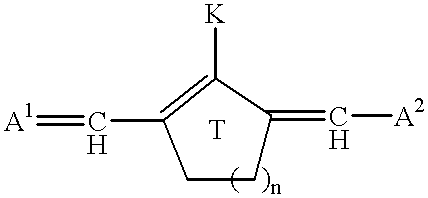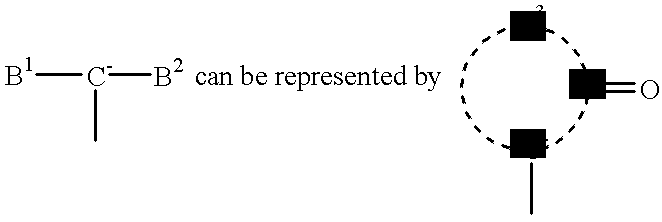Method for making positive working printing plates from a heat mode sensitive image element
a technology of image elements and positive working, which is applied in the field of making positive working printing plates from heat mode sensitive image elements, can solve the problems of cumbersome and laborious work methods, insufficient photosensitive coatings to be directly exposed with lasers, and complex development and associated developing liquids, so as to increase the run length of printing plates and improve durability.
- Summary
- Abstract
- Description
- Claims
- Application Information
AI Technical Summary
Benefits of technology
Problems solved by technology
Method used
Image
Examples
example 1
Positive Working Thermal Plate Based on an Alkali-soluble Binder
Preparation of the Lithographic Base
A 0.20 mm thick aluminum foil was degreased by immersing the foil in an aqueous solution containing 5 g / l of sodium hydroxide at 50.degree. C. and rinsed with demineralized water. The foil was then electrochemically grained using an alternating current in an aqueous solution containing 4 g / l of hydrochloric acid, 4 g / l of hydroboric acid and 5 g / l of aluminum ions at a temperature of 35.degree. C. and a current density of 1200 A / m.sup.2 to form a surface topography with an average center-line roughness Ra of 0.5 mm.
After rinsing with demineralized water the aluminum foil was then etched with an aqueous solution containing 300 g / l of sulfuric acid at 60.degree. C. for 180 seconds and rinsed with demineralized water at 25.degree. C. for 30 seconds.
The foil was subsequently subjected to anodic oxidation in an aqueous solution containing 200 g / l of sulfuric acid at a temperature of 45.deg...
example 2
Positive Working Thermal Plate Based on an Alkali-soluble Binder
The lithographic base and the first layer were prepared and coated as described in example 1.
Preparation of the Top Layer
To 28.66 g of tetrahydrofuran and 19.11 g of methoxypropanol was added a solution of 0.47 g novolac in 0.82 g of methoxypropanol and 0.112 g of IRD No 17 and said solution was coated at 30 .mu.m wet thickness, giving a dry weight of 0.31 g / m.sup.2.
This material was imaged with a GERBER C42T .TM. internal drum platesetter at 12,000 rpm and 2540 dpi. The power level of the laser in the image plane was 6.65 W. After IR-exposure no layer damage, as a result of ablation, could be observed. This was also verified by measuring the optical density of the layer prior and after the IR-laser exposure (see table 1).
After exposure the material was developed in an alkaline developing solution (EP 26 developer commercially available from Agfa), dissolving very rapidly the IR-exposed areas, resulting in a positive wo...
PUM
| Property | Measurement | Unit |
|---|---|---|
| molar ratio | aaaaa | aaaaa |
| molar ratio | aaaaa | aaaaa |
| wavelength range | aaaaa | aaaaa |
Abstract
Description
Claims
Application Information
 Login to View More
Login to View More - R&D
- Intellectual Property
- Life Sciences
- Materials
- Tech Scout
- Unparalleled Data Quality
- Higher Quality Content
- 60% Fewer Hallucinations
Browse by: Latest US Patents, China's latest patents, Technical Efficacy Thesaurus, Application Domain, Technology Topic, Popular Technical Reports.
© 2025 PatSnap. All rights reserved.Legal|Privacy policy|Modern Slavery Act Transparency Statement|Sitemap|About US| Contact US: help@patsnap.com



